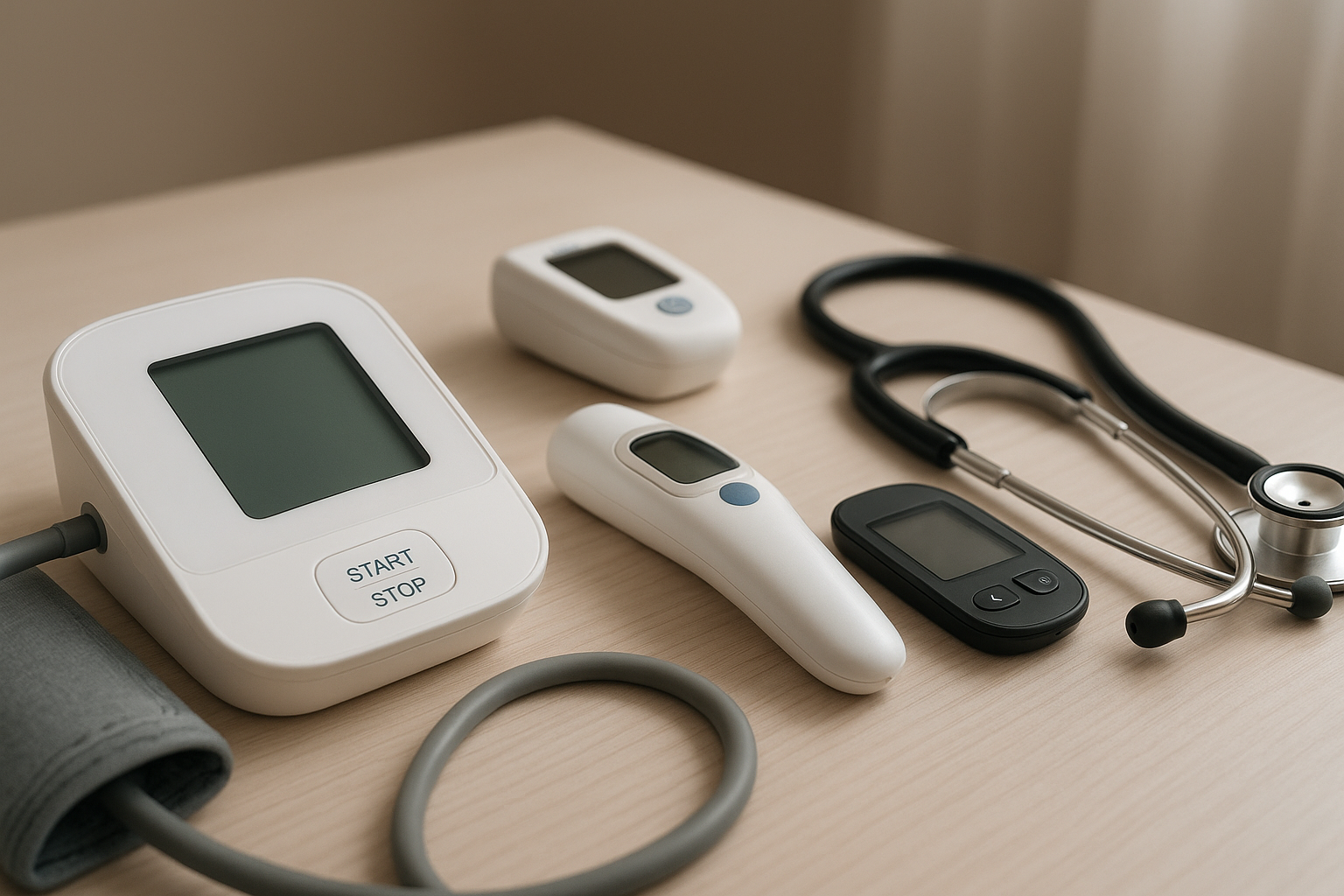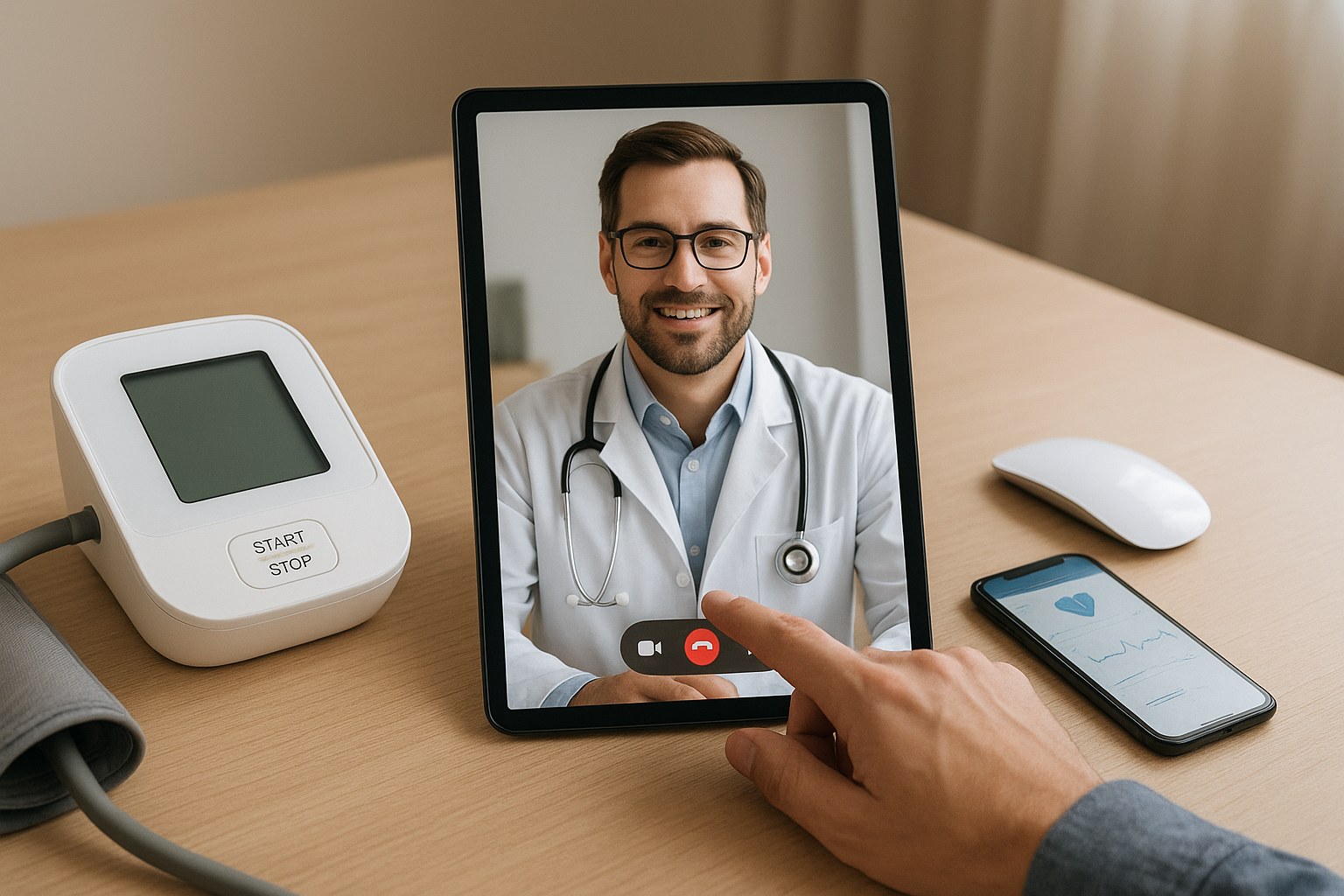Healthcare keeps showing up on institutional watchlists like that dependable relative who turns up with pie and practical advice. In 2025 the sector is simultaneously a slow-burn structural bet (aging populations, rising chronic disease burdens), an innovation hotbed (biotech, gene therapies, AI for drug discovery), and a capital-markets riddle (biotech funding cools while big-cap pharma and digital health soak up investor attention). In short: opportunity is real, but so are pitfalls. In this article, traders and investors will be able to get acquainted with the current market situation.
Why Investors Are Eyeing Healthcare in 2025
Healthcare is a popular pick in portfolios for three straightforward reasons: long-term secular growth, defensive characteristics in downturns, and accelerating demand driven by demographics and technology.
Long-Term Growth Potential
The macro tailwinds for healthcare are durable. Developed markets face population aging and rising rates of chronic disease; emerging markets are expanding access and insurance coverage; and R&D productivity is being stretched forward by tools like generative AI that can accelerate drug discovery and diagnostics. Analysts and consultancy outlooks in 2025 are broadly constructive about the industry’s medium-term revenue and EBITDA prospects, citing digital transformation and improved operating leverage across many provider and life-science segments.
Resilience Against Economic Downturns
Healthcare spending is less elastic than discretionary consumer spending. People don’t pause cardiac care or cancer drugs for a recession. That said, not all sub-sectors are equally defensive: elective outpatient procedures and premium cosmetic services are more economically sensitive than chronic care or essential therapeutics. Investors who treat “healthcare” as a single asset class can be surprised — sector composition matters.
Rising Global Demand for Health Services
Broader demand drivers — aging populations in OECD countries, rising middle-class healthcare consumption in Asia and Latin America, and improved insurance penetration — create a multi-decade growth runway for many healthcare businesses. At the same time, technology-enabled access (telemedicine, remote monitoring, digital diagnostics) is converting latent demand into actual service utilization in places where access was previously limited. Projections for digital health and telemedicine market sizes show strong multi-year growth trajectories that are already influencing capital flows.
Key Sectors Driving Healthcare Investment
Healthcare is a multi-headed beast. Below I unpack the main investmentable sub-sectors that matter to traders and allocators in 2025.
Pharmaceuticals and Biotech

What it is: Biopharmaceutical companies discover, develop, and commercialize therapeutics and vaccines. “Pharma” often refers to established, diversified companies; “biotech” usually describes smaller firms focused on novel modalities (gene therapy, mRNA, antibody drug conjugates, cell therapy).
Why investors care in 2025: Breakthrough science (gene editing, cell therapy, radiopharma), large addressable markets for oncology and rare diseases, and continued M&A interest from big pharma seeking pipeline replenishment.
Market dynamics to watch: Venture funding retrenched in parts of 2025 — investors have become choosier, concentrating capital into clinical-stage programs with demonstrable data. That means valuation dispersion: winners with strong data still command premium pricing, while early-preclinical names face fundraising pressure.
Investor playbook: For traders, big pharma equities (diversified R&D, defensive cashflows) can be portfolio anchors. For higher risk/reward, selective biotech names with upcoming catalysts (Phase II/III readouts, partnership deals) can provide event-driven returns — just size positions for binary outcomes and be clear on endpoint timelines.
Medical Devices and Diagnostics

What it is: Companies that design and sell instruments, implants, diagnostic kits, and monitoring hardware/software for clinical use.
Why investors care in 2025: Devices enjoy faster commercialization cycles than new drugs and can generate steady recurring revenue (consumables, instrument leases). Diagnostics — especially molecular diagnostics and point-of-care tests — are benefiting from infectious-disease preparedness and oncology screening programs.
Market evidence: Device makers are expanding into software and data services, increasing margins and customer stickiness. Medical device M&A remains active as larger players buy specialized device innovators. (See facility/provider section below for how device adoption is influenced by payer and provider economics.)
Investor playbook: Favor companies with recurring consumable revenues, strong clinical adoption curves, and regulatory clarity. Watch reimbursement developments closely — reimbursement is the oxygen of device adoption.
Healthcare Facilities and Services

What it is: Hospitals, outpatient clinics, specialized surgery centers, and operators of care networks.
Why investors care in 2025: Provider economics are improving in many markets after pandemic headwinds; consolidation and scale are creating margin opportunities. Outpatient and ambulatory surgery centers (ASCs) are attractive due to lower costs and quicker throughput.
A note on elective and cosmetic services: Elective outpatient treatments can be cyclically sensitive, yet they can provide high margins and cash generation. For readers researching device or aesthetic treatment trends at a local level, checking an aesthetic clinic near me can give ground-level evidence of adoption patterns — the link between consumer demand and clinic availability is direct and informative (clinic listings, pricing, offered procedures). Embed that practical check into diligence when assessing facility growth potential.
Investor playbook: Look for operators with diversified payor mixes, efficient capital deployment (e.g., expanding ASCs), and digital front-end capabilities to attract and retain patients. In many regions, scale matters: larger health systems can negotiate better rates and invest in high-margin specialties.
Digital Health and Telemedicine

What it is: Telehealth platforms, remote monitoring, digital therapeutics (DTx), care coordination SaaS, EHR adjacencies, and health data analytics firms.
Why investors care in 2025: Digital health remains a structural growth theme. Market estimates for digital health and telemedicine show high CAGRs across 2025–2030, with telehealth and broader digital health platforms projecting strong adoption and expanding serviceable markets.
Why it’s tricky: The market is crowded. Not every telehealth vendor will become a durable cash generator; unit economics, clinical outcomes, payer reimbursement, and customer retention are differentiators. Investors must distinguish between platforms with defensible network effects and one-trick apps.
Investor playbook: Favor firms with clear provider partnerships, integrated value-based care models, or monetizable data streams. For short-term trading, monitor regulatory updates and demonstration of physician adoption metrics — these can be near-term catalysts.
Opportunities in Healthcare Innovation
Innovation is the growth engine in healthcare — from drug discovery to digital workflows. Here are the innovation pockets investors are watching.
Cutting-Edge Drug Development and Biotech Advances
What’s new: Precision modalities (CRISPR/gene editing, base editing), mRNA beyond vaccines (therapeutics), ADCs (antibody-drug conjugates), cell therapies, and radiopharmaceuticals are showing clinical promise.
Why it matters: Novel modalities can create multi-billion dollar treatment classes if safety and efficacy land. Investors who identify credible platforms early can capture enormous upside — but the timeline and binary trial outcomes demand careful sizing and risk management. Recent large fundraises into promising oncology startups illustrate investor willingness to back breakthrough programs when data supports potential.
Tactical angle: Monitor biotech pipelines for platform differentiation (proprietary delivery systems, de-risked target validation) and for partnership or licensing deals with big pharmas — those often validate platform potential and provide capital relief.
Artificial Intelligence and Predictive Healthcare Analytics
What’s new: Generative AI and advanced predictive models are moving from pilot projects to production in clinical documentation, drug discovery, imaging interpretation, and operational workflows. Leading consultancies and research groups are publishing frameworks and case studies showing value capture from AI implementations.
Why it matters: AI can compress timelines (drug discovery), reduce administrative costs (coding, prior authorizations), and improve diagnostic sensitivity. The potential dollar impact is large — studies estimate meaningful cost savings and efficiency gains when AI is integrated at scale.
Investor playbook: Differentiate between AI vendors with proprietary clinical datasets and those repackaging off-the-shelf models. For public markets, watch vendor partnerships with hospital systems and evidence of improved outcomes or cost reductions.
Personalized Medicine and Genomics
What’s new: Wider adoption of companion diagnostics, cheaper sequencing, and more actionable genomics insights mean tailored therapies and higher margin specialty treatments. Payers are increasingly open to genomic testing when it is clearly tied to therapy selection.
Why it matters: Personalization can raise the effective price per patient for therapies while improving outcomes — an attractive combo for specialty pharma and diagnostic providers.
Investor playbook: Look at companies that integrate diagnostics with therapeutic propositions (theranostics) or that have strong payer evidence strategies. Genomics platforms with broad utility and recurring testing models are prime targets.
Risks and Challenges for Healthcare Investors
Healthcare offers a tempting cocktail of innovation and durability, but the sector has its own unique risk map. Here are the main hazard zones.
Regulatory and Policy Uncertainty
Healthcare is policy-heavy. Drug approval timelines, reimbursement policies, pricing reforms, and cross-border regulatory divergence can alter revenues overnight. Politics matters — think national drug-pricing debates, changes in Medicare/Medicaid reimbursement rules, or country-specific emergency authorizations that change market access.
What to monitor: Major policy proposals in the U.S. and EU, national reimbursement updates, and regulatory guidance on AI/algorithms and digital therapeutics. These changes can materially affect valuation multiples and near-term revenue visibility.
Rising Costs and Reimbursement Pressures
Providers face cost inflation (labor, supplies), and payers are under pressure to control costs, which affects reimbursement rates. For device makers and providers, reimbursements and contracting are levers that determine adoption economics. For pharma, pricing scrutiny and payer negotiation can compress realized prices.
Market signal: Many provider and payer executives in 2025 indicate improving profitability but persistent margin pressure in specific segments; watch payer-provider contract negotiations and government reimbursement updates for leading indicators.
Competitive Market Landscape
As capital flows into digital health, AI, and biotech, competition intensifies. Not every platform will scale; not every drug target will validate. High failure rates in clinical trials mean biotech investing remains inherently binary for many small caps.
Investor playbook: Use a portfolio approach for high-risk assets (small biotech) and avoid concentration risk around single-asset bets unless your thesis is supported by deep diligence and you can size the position appropriately.
How to Approach Healthcare Investments in 2025
Here’s a practical, trader-consultant framework for allocating to healthcare in 2025: balance, catalyst orientation, diversification, and active risk management.
Balancing Risk and Reward
Portfolio mix: Consider splitting healthcare exposure across:
- 40–60% core large-cap pharma & diversified device makers (defensive cashflows, dividends)
- 20–40% growth/technology healthcare (digital health, diagnostics, medtech growth names)
- 10–20% opportunistic biotech and event-driven trades (binary catalysts, partnerships)
This is illustrative and depends on risk tolerance. For a trader looking for alpha, weight can shift toward catalysts and short-term event plays; a longer-term investor may tilt to core durable earners and selective innovation exposure.
Identifying High-Growth Segments
Where to tilt overweight in 2025: digital health platforms with monetization pathways, diagnostics that tie to oncology and precision medicine, AI companies with clinical integrations, and device firms with recurring consumable models. Evidence: market research and consultancy outlooks indicate above-average CAGRs for digital health and telemedicine in the 2025–2030 window.
Catalyst checklist: For biotech and digital health, prioritize companies with:
- Near-term clinical or regulatory catalysts (Phase readouts, approvals)
- Demonstrable unit economics or payer coverage
- Credible partnerships with large pharma or provider systems
Diversification Across Sub-Sectors
Healthcare is not one homogeneous sector. Balance exposure across therapeutics, devices, payor/provider, and digital health to avoid idiosyncratic risk (e.g., a policy change that hits drugs but not devices).
Practical tool: Construct a sector exposure table (example below) and update quarterly.
| Sub-Sector | Typical Return Profile | Volatility | Key Catalysts | Risk Drivers |
| Big Pharma | Steady, dividend yield | Low-Med | M&A, new drug approvals | Pricing/policy, patent cliffs |
| Biotech (early) | High upside, binary | High | Trial readouts, partnerships | Trial failures, funding squeeze |
| Med Devices | Revenue growth, recurring | Med | Reimbursement wins, product launches | Adoption delays, regulatory recalls |
| Diagnostics | Rapid growth, margins | Med | Screening programs, payer coverage | Tech substitution, reimbursement |
| Digital Health | High growth potential | High | Reimbursement rules, tech partnerships | Monetization, churn |
(Use this as a living snapshot for position sizing and rebalance decisions.)
Key Takeaways for Investors
Long-Term Strategic Opportunities
Healthcare in 2025 offers durable structural growth driven by demographics, innovation, and digital transformation. Sectors with clear monetization — diagnostics tied to treatment, devices with recurring consumables, and digital platforms with payer/provider contracts — present the most durable opportunities.
Timing Market Entry for Maximum Impact
Use event calendars (trial readouts, regulatory decisions, earnings) to time entries for high-volatility assets. For core holdings, seek valuation dislocations and structural catalysts (M&A, regulatory clarity, coverage decisions).
Ethical and ESG Considerations
ESG matters here not just for reputation but because patient safety, equitable access, and data governance have regulatory and market consequences. Companies with strong ethical frameworks and transparent data governance are less likely to face disruptive regulatory backlashes — and that lowers downside risk.
Conclusion: Is Now the Right Time to Invest in Healthcare?
Short answer: it depends — on your time horizon, risk appetite, and sector selection.
- If you want stability and dividends: large-cap pharma and established device manufacturers remain attractive as portfolio anchors. They offer cashflow resilience and less binary risk.
- If you seek growth with manageable risk: diagnostics, medtech with consumable models, and digital health companies with validated unit economics are appealing.
- If you hunt for high upside: selective biotech and platform plays offer outsized returns but require precise catalyst timing and disciplined sizing.
Healthcare in 2025 is neither a sure thing nor a trap — it’s a diversified ecosystem where careful sub-sector selection, catalyst awareness, and active risk management win more often than blind momentum chasing.
Remember: the best trade is a well-sized trade with a defined thesis, a timeline, and an exit plan. If you’d like, I can convert this analysis into a one-page investment checklist, a watchlist of potential catalysts to track over the next 6–12 months, or a deep dive on a specific sub-sector (e.g., generative AI in clinical workflows or oncology theranostics) with tickers and candidate names to watch.
